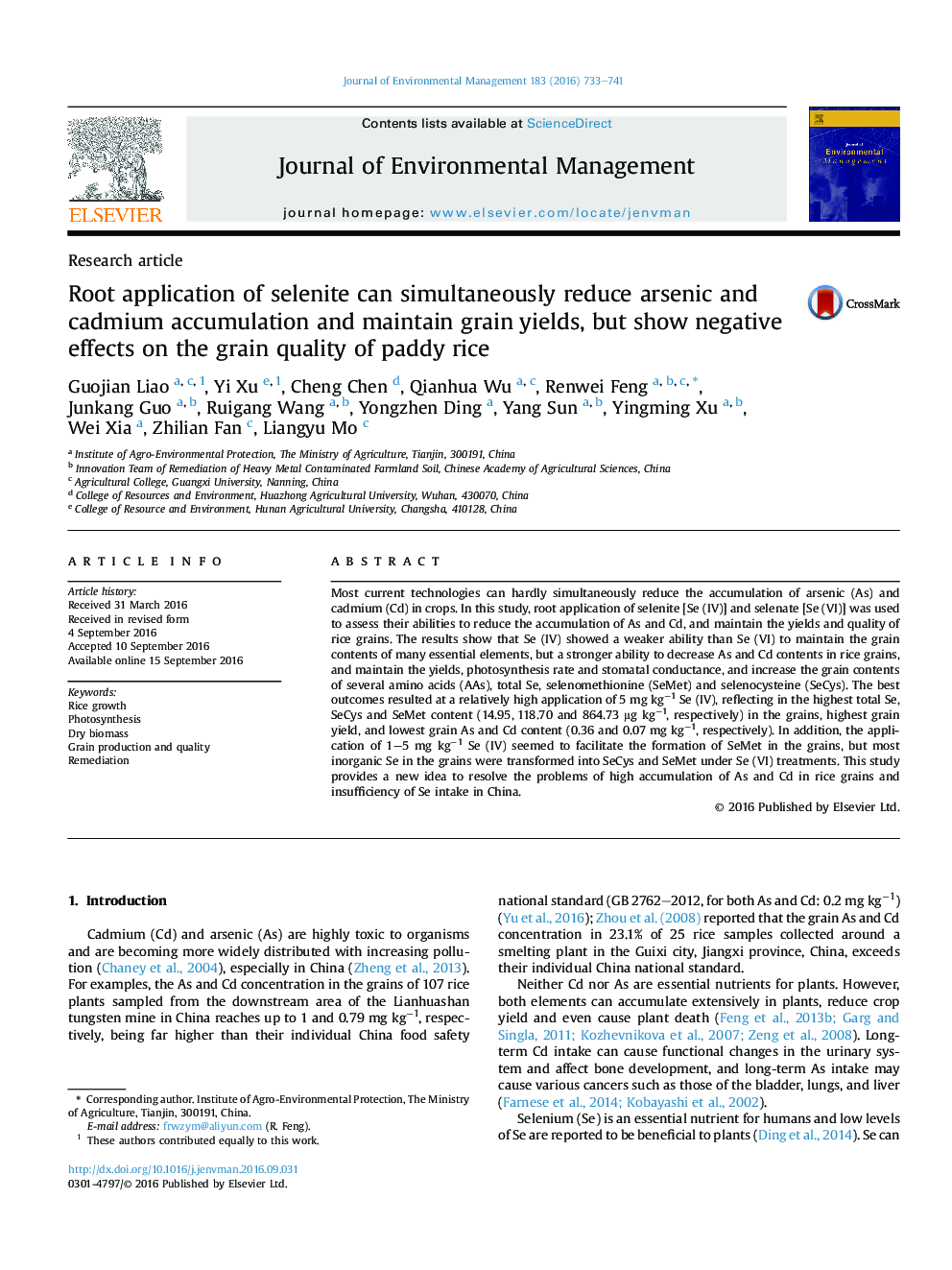| کد مقاله | کد نشریه | سال انتشار | مقاله انگلیسی | نسخه تمام متن |
|---|---|---|---|---|
| 5117210 | 1378118 | 2016 | 9 صفحه PDF | دانلود رایگان |
• Se (IV) was more effective to reduce As and Cd contents in paddy rice than Se (VI).
• Se (IV) and (VI) decreased the contents of many essential elements in grains.
• Se (IV) increased total AAs but Se (VI) suppressed the contents of all grain AAs in grains.
• Se (IV) facilitated the formation of SeMet vs SeCys but Se (VI) formed both of them.
Most current technologies can hardly simultaneously reduce the accumulation of arsenic (As) and cadmium (Cd) in crops. In this study, root application of selenite [Se (IV)] and selenate [Se (VI)] was used to assess their abilities to reduce the accumulation of As and Cd, and maintain the yields and quality of rice grains. The results show that Se (IV) showed a weaker ability than Se (VI) to maintain the grain contents of many essential elements, but a stronger ability to decrease As and Cd contents in rice grains, and maintain the yields, photosynthesis rate and stomatal conductance, and increase the grain contents of several amino acids (AAs), total Se, selenomethionine (SeMet) and selenocysteine (SeCys). The best outcomes resulted at a relatively high application of 5 mg kg−1 Se (IV), reflecting in the highest total Se, SeCys and SeMet content (14.95, 118.70 and 864.73 μg kg−1, respectively) in the grains, highest grain yield, and lowest grain As and Cd content (0.36 and 0.07 mg kg−1, respectively). In addition, the application of 1–5 mg kg−1 Se (IV) seemed to facilitate the formation of SeMet in the grains, but most inorganic Se in the grains were transformed into SeCys and SeMet under Se (VI) treatments. This study provides a new idea to resolve the problems of high accumulation of As and Cd in rice grains and insufficiency of Se intake in China.
Figure optionsDownload high-quality image (215 K)Download as PowerPoint slide
Journal: Journal of Environmental Management - Volume 183, Part 3, 1 December 2016, Pages 733–741
